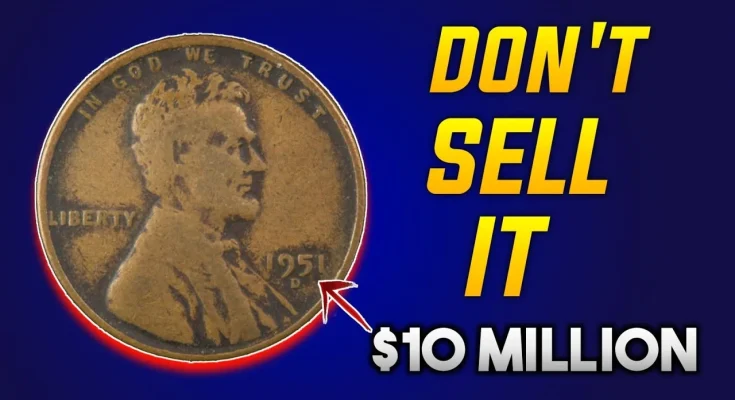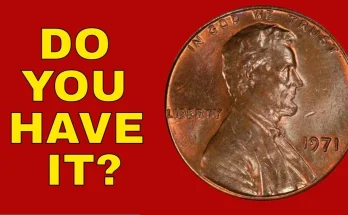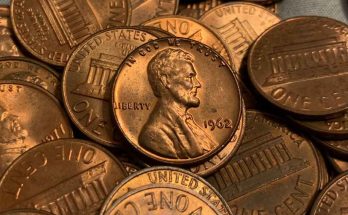Imagine finding a penny in your spare change that’s worth a life-changing fortune. Sound too good to be true? For a lucky few, it’s not. The legendary Lincoln Wheat Penny, particularly the ultra-rare 1943 bronze version, could be worth up to $120 million—and yes, there’s still a chance one could be hiding in everyday circulation.
Why the Lincoln Wheat Penny Is So Valuable
The Lincoln Wheat Penny isn’t just another coin—it’s a piece of American history. Introduced in 1909 to celebrate Abraham Lincoln’s 100th birthday, it was the first U.S. coin to feature a real person instead of a symbolic figure like Lady Liberty.
- Designer: Victor David Brenner
- Years minted: 1909–1958 (with wheat stalk reverse)
- Nickname: “Wheat Penny” due to the iconic wheat stalks on the reverse
Collectors treasure these pennies for their historical significance, unique design, and in some cases, extreme rarity.
The 1943 Copper Lincoln Penny: A $120 Million Rarity?
A Coin Born From Wartime Confusion
During World War II, copper was urgently needed for ammunition and other military uses. In 1943, the U.S. Mint temporarily switched to zinc-coated steel for pennies. But a few copper planchets from 1942 were accidentally left in the presses—resulting in the famous 1943 copper penny.
How Rare Are They?
Only about 20 of these copper 1943 pennies are believed to exist. Because of their origin story and scarcity, these coins can fetch staggering amounts at auction.
- Top sale price: Over $1 million
- Estimated value today: Up to $120 million (in pristine condition, according to some collectors)
Fun Fact: If you find a 1943 penny that looks copper, try sticking it to a magnet. Steel pennies will stick; copper won’t.
Other Rare Lincoln Wheat Pennies Worth Big Money
While the 1943 bronze penny is the crown jewel, several other Lincoln Wheat Pennies are also highly collectible—and potentially hiding in your coin jar.
Valuable Wheat Pennies to Look For
| Year | Mint Mark | Estimated Value | Why It’s Valuable |
|---|---|---|---|
| 1909-S VDB | S | Up to $50,000+ | Low mintage, designer initials |
| 1914-D | D | $1,500–$10,000 | Rare in high grades |
| 1922 “Plain” | None | $1,000–$15,000 | Die error caused missing mint mark |
| 1931-S | S | Up to $4,000 | Low mintage |
| 1955 Double Die | Any | Up to $15,000 | Minting error caused doubled text |
How to Spot a Valuable Lincoln Wheat Penny
1. Check the Date and Mint Mark
Start by looking at the year and the mint mark under the date:
- S = San Francisco (more valuable)
- D = Denver
- No mark = Philadelphia
2. Examine the Material
Especially for 1943 pennies, color and metal type matter:
- Steel (silver-colored) = Common
- Copper (brownish-red) = Rare (test with a magnet)
3. Look for Errors
Minting mistakes like double dies, off-center strikes, or missing mint marks can drastically increase a penny’s worth.
What to Do If You Think You’ve Found a Rare Penny
Don’t Clean It
Polishing or cleaning your coin can destroy its value. Collectors and graders prefer coins in their original, unaltered state.
Handle With Care
Always hold coins by the edges. Store them in a coin sleeve or holder to prevent scratches and environmental damage.
Get a Professional Evaluation
Before selling or celebrating, have the coin graded and authenticated by a reputable organization such as:
- PCGS (Professional Coin Grading Service)
- NGC (Numismatic Guaranty Company)
A certified grade can drastically boost its market value and buyer trust.
Are Rare Pennies Still in Circulation?
The Answer Might Surprise You
While the odds are slim, rare Lincoln Wheat Pennies do occasionally surface in everyday change, estate sales, or old piggy banks. Many people unknowingly toss these valuable coins into jars or spend them without a second glance.
Treasure hunting tip: Regularly check your change. Focus on dates from 1909 to 1958, especially 1943, 1955, and early mint marks.
Why Collecting Coins Is More Than Just a Hobby
Coin collecting combines history, art, and investment into one fascinating pursuit. Each penny tells a story—from wartime production changes to artistic controversy.
Lincoln Wheat Pennies, in particular, serve as a tangible connection to major events in U.S. history. Whether you’re a serious numismatist or just curious, it’s a fun and potentially rewarding way to explore the past.
Final Thoughts: A Penny Could Change Your Life
Finding a $120 million Lincoln Wheat Penny may sound like fantasy—but the coin’s real-world value and compelling backstory make it a thrilling possibility.
So next time you’re handed a handful of change, don’t ignore the pennies. Look closer—you might be holding a piece of American history… or your ticket to an unbelievable payday.
Related Searches:
- Most valuable U.S. pennies
- How to identify rare coins
- Coin collecting tips for beginners
- Lincoln Wheat Penny values by year
- Signs your penny is worth money
Authoritative Sources:
- PCGS CoinFacts
- U.S. Mint historical archives
- Numismatic Guaranty Company (NGC)
- Heritage Auctions and Stack’s Bowers
Would you like this turned into a downloadable PDF, infographic, or mobile-friendly blog layout?



